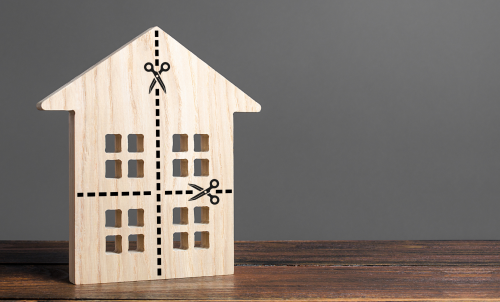Mortgage options are varied, with borrowers able to choose between options such as fixed-rate, variable-rate and tracker mortgages. The tracker mortgage stands out for its unique tie to the Bank of England's base rate. This is a type of variable-rate mortgage where the interest rate you pay moves in direct correlation with the Bank of England’s base rate plus a fixed percentage margin set by your lender. Payments may go up or down depending on changes to the base rate, thus offering both opportunities and risks. This article explores what a base rate tracker mortgage is, how it differs from other types of mortgage, and its potential advantages and disadvantages.
What is a Base Rate Tracker Mortgage?
A base rate tracker mortgage is a type of variable-rate mortgage that follows, or "tracks," the Bank of England's base rate, plus a fixed percentage margin set by the lender. For example, if the base rate is 0.75% and the lender's fixed percentage margin is 1%, your mortgage interest rate would be 1.75% (i.e. 0.75% + 1%). As of 8 May 2025, the Bank of England's base rate stood at 4.25%, following a 0.25% reduction from the previous rate of 4.5%. This means that if your tracker mortgage agreement stipulates an additional 1% margin, your mortgage interest rate would be 5.25% (i.e. 4.25% + 1%).
Unlike standard variable rate (SVR) mortgages, which can change at the lender's discretion, a base rate tracker mortgage offers more transparency and consistency in how rate changes are applied. This direct link to the base rate ensures that any changes made to it by the Bank of England are promptly reflected in your mortgage payments. It is important to note that while base rate tracker mortgages can offer lower rates when the base rate is low, they also expose borrowers to the risk of increased payments if the base rate rises. Considering the economic climate and potential interest rate trends is important when opting for a tracker mortgage.
How Does a Tracker Mortgage Differ from Other Mortgage Types?
- Fixed-Rate Mortgages: Fixed-rate mortgages offer a set interest rate for a predetermined term, typically two, five, three or even ten years, providing stability and certainty in monthly repayments regardless of base interest rate fluctuations. This predictability can be especially beneficial for homeowners who prefer to plan their budgets without the risk of payment increases.
By contrast, a base rate tracker mortgage, which is typically set for a two or five year term, moves with the Bank of England’s base rate, plus a lender’s margin, meaning that your monthly payments can rise or fall depending on changes to that rate during that term. While a tracker rate can sometimes be cheaper than a fixed rate during periods of low interest rates, it also comes with the downside of unpredictability if the base rate increases, potentially leading to higher mortgage costs than under a fixed rate.
- Standard Variable Rate (SVR) Mortgages: SVRs are interest rates set entirely at the lender’s discretion and can change at any time, independent of the Bank of England’s base rate. This makes SVRs unpredictable, and they are often significantly higher than tracker mortgage rates.
Advantages of Base Rate Tracker Mortgages
- Potential for Lower Rates: If the Bank of England's base rate decreases, your tracker mortgage rate will drop, reducing your monthly payments. This can make tracker mortgages particularly appealing during periods of monetary easing, when interest rates are cut to encourage borrowing to stimulate the economy.
- Transparency: The link to the external base rate means that changes in your tracker interest rate are clear and not subject to lender discretion. You can clearly see how your interest rate is calculated and anticipate how it might change following official rate announcements. This removes the uncertainty that often comes with standard variable rates, where lenders may increase rates independently of market interest rates.
Disadvantages of Base Rate Tracker Mortgages
- Interest Rate Increases: If the base rate rises, so will your tracker mortgage rate, leading to higher monthly mortgage payments. This can put additional pressure on your budget, particularly if the increases are sharp or frequent.
- Budgeting Challenges: The potential variability in payments can make it harder to plan finances compared to fixed-rate mortgages. This unpredictability may be stressful for those with tight budgets or variable income, as an increase in the base rate can have an immediate adverse financial impact. While potential savings are a benefit, the lack of payment stability can be a disadvantage for risk-averse borrowers.
Duration of Tracker Mortgages and Remortgaging Options
Tracker mortgages typically come with initial deal terms lasting between two and five years, during which your interest rate will closely follow the Bank of England's base rate plus a set lender percentage margin. Once this initial term ends, the mortgage usually reverts to the lender’s Standard Variable Rate (SVR), which is often significantly higher and not tied to any external benchmark. To avoid increased monthly payments, many borrowers choose to re-fix their mortgage rate or remortgage, usually to a two or five year fixed or tracker rate, before the SVR period begins. As your tracker mortgage term draws to a close, it becomes crucial to explore re-fixing or remortgaging options that align with your financial goals. Key alternatives include:
Switching to a Fixed-Rate Mortgage:
This option provides repayment certainty and protection against future interest rate rises, which can be particularly reassuring if economic forecasts predict an upward trend in the base rate. Although fixed-rate mortgages may initially have higher rates than tracker mortgage rates, the long-term stability can be invaluable for budgeting and financial planning.
Opting for Another Tracker Deal:
If you expect interest rates to remain low or fall further, continuing with a tracker mortgage can potentially help you maintain lower monthly payments.
Consulting a Mortgage Broker:
A mortgage broker can help you navigate the wide range of remortgaging options available on the market, ensuring that you secure a deal that matches your personal and financial circumstances. They also have access to exclusive rates and can guide you through any fees or early repayment charges associated with switching products, thus helping you make an informed and cost-effective decision.
Conclusion:
Tracker mortgages offer a dynamic alternative to fixed-rate options, with potential savings if interest rates fall. However, they come with the risk of increased payments if rates rise. Assess your financial situation carefully and consult with professionals to determine if a base rate tracker rate mortgage aligns with your needs.
FAQs:
Q: Is a tracker mortgage suitable for first-time buyers?
A: It depends on your financial stability and risk tolerance. If you are comfortable with potential fluctuations in monthly payments and believe interest rates will remain low or decrease, a tracker mortgage could be beneficial. However, if you need predictable outgoings for budgeting purposes or are concerned about rising interest rates, a fixed-rate mortgage might be a safer choice for your first home purchase.
Q: What happens if the base rate drops below zero?
A: Most tracker rate mortgages have a floor, which is the minimum interest rate below which your mortgage rate cannot fall, even if the base rate turns negative. This means that you will not benefit from negative rates. It is important to check your mortgage agreement to understand how such floors might apply to your deal.
Q: Are there fees associated with tracker mortgages?
A: Yes, like other mortgage types, tracker mortgages may come with arrangement or product fees. Always review the full cost structure, including fees, being offered by different products and lenders before committing, in order to ensure that you are getting the best possible value.
Q: How often can the interest rate change on a base rate tracker mortgage?
A: The Bank of England reviews the base rate approximately every six weeks. The tracker mortgage rate will change if the base rate changes during the tracker rate term, which usually ranges from two to five years, following such reviews.
Additional Sources:
https://www.equifax.co.uk/resources/mortgage/tracker-mortgages.html
https://www.experian.co.uk/consumer/mortgages/guides/tracker.html










